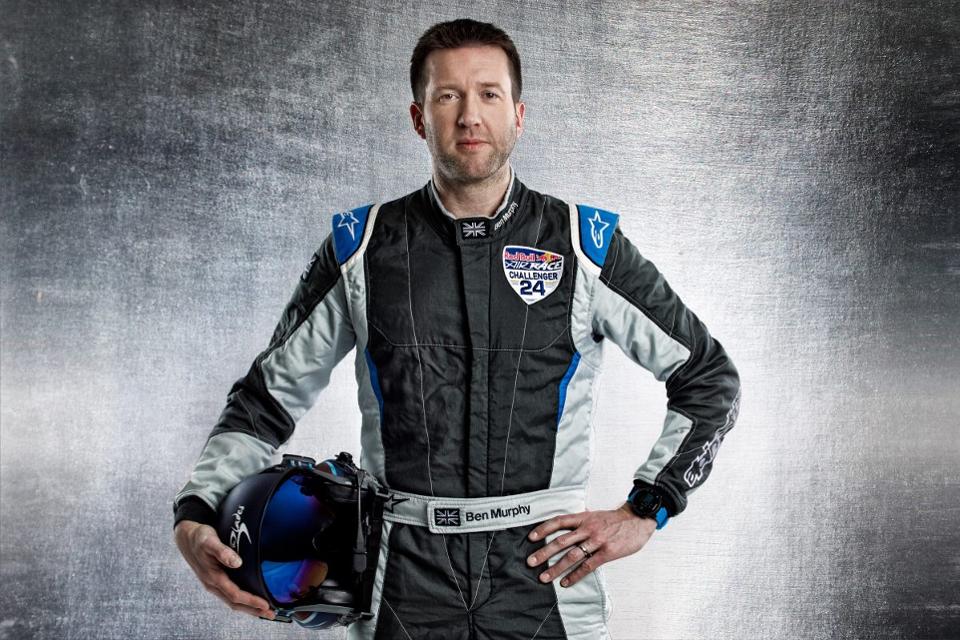For those of us that work out regularly, exercise is usually something we do casually to improve our lives in some way. Whether it’s to look good, to live a longer life, or to relieve stress: everyone has their own reasons for keeping fit and healthy. But what if – due to the dangerous nature of your profession – staying fit was a matter of life or death?
I met with former Red Arrows team leader and stunt plane pilot, Ben Murphy: someone who has to follow a strict fitness regime, not only for his day job, but so he can return home in one piece every day.
Now a Red Bull Air Race world championship contender and team leader for the Blades Aerobatic Display Team, Murphy has even more reason to ensure he’s in top top shape or else it could get him into some serious trouble. And I’m not talking about a ‘slap on the wrist’ from the boss kind. Murphy told me about the dedicated health regime involved in his treacherous career as a Red Bull Air Race athlete and stunt plane pilot, and how important fitness is in keeping him alive on a daily basis.
 Red Bull
Red BullBen Murphy is a former Stunt pilot for the Royal Air Force aerobatic team and now competes in the Red Bull Air Race across the world for the UK
The Red Bull Air Race, established in 2003 and created by Red Bull GmbH, is an international series of air races around the world in which competitors have to navigate a challenging obstacle course in the fastest time. Murphy made his debut in the Challenger Class of the Red Bull Air Race in 2016, and by the end of the season, he’d claimed three consecutive podiums, so he’s definitely keen to throw himself at any challenge, no matter how perilous.
But it’s not just about bravery. Watching pilots like Murphy hurting around an obstacle course in a tiny aircraft might look terrifying for us spectators, but what onlookers don’t see is the mental and physical stresses participators encounter while soaring through the skies at break-neck speeds. These pilots experience a high level of g-forces on their bodies and there’s a lot of work they must do to try and counteract it. A g-force is felt by the body as a result of acceleration or gravity, informally described in units of acceleration equal to one g. For example, a 12 pound object undergoing a g-force of 2g experiences 24 pounds of force. The higher the g, the heavier your body, and the more dangerous it can be if not handed properly, especially for pilots during an event like the Red Bull Air Race, when high g-forces are impacting the body.
 Red Bull
Red BullStunt plane pilots can undergo g-forces up to ten times their body weight while racing
“What is happening to your body [during a flight] when you have that sensation of being pressed into the seat, is all the blood is being forced away from your head – all the way down through your body,” Murphy explained.
He also described the rigorous health and fitness regime he must maintain to ensure he doesn’t black out mid-flight, including a specific set of movements of the body, which require a very high level of fitness.
“What we experience at 3g and 4g is just under the threshold of you really needing to do something to your body to counter the g-forces,” Murphy explained. “Up to that point, your heart and your muscles are generally coping. Anything over 4g or 5g and you really have to work hard then to counter the affects of the g-forces.
“If you did nothing about it, your brain would have no oxygenated blood in it after just a few seconds, so you start to lose you vision, your consciousness and you black out.”
However, a stunt plane race pilot has much more than just 4 or 5g to contend with. During a competitive race, pilots will pull up to 9 or 10g, especially when taking tight corners to make better times.
“What we race pilots do is something called the ‘anti-g straining maneuver’ which is essentially the bracing of all of your upper torso and leg muscles. By doing this, you’re clenching your muscles and restricting all your blood vessels; stopping your blood from draining down from your head.”
It takes time to learn this technique, Murphy said, as it’s really quite a physical maneuver.
“If you just clenched, even after just five seconds, you still wont have enough oxygen in the brain, so you need to exhale and get more oxygen into your lungs while under the conditions where your whole body and everything is working ten times harder than normal,” he explained. “Which is why if you watch videos of the pilots racing, they pull the high-g turns, you see them do the really physical force breathing, and that’s them getting more oxygen into them to remain conscious.”
Source:-Forbesa







